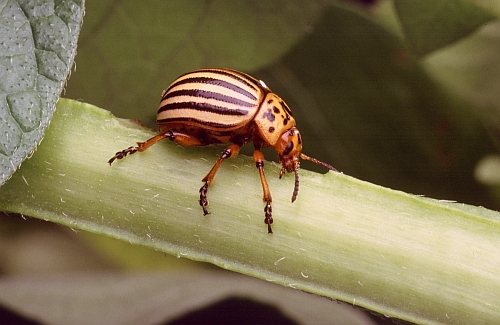This week I was watching the weeds. The constant moisture that it takes to get the grass to spread is encouraging a huge crop of weeds. I identify spotted spurge, wild chamomile,
tomatillos*, lots of junk grasses, annual bluegrass, cranesbill and others. I don't like to use herbicides, but there are too many weeds to control by hand pulling and using the scuffle hoe would rip out the spreading grass runners.
My recommendation for anyone trying to establish a buffalo grass lawn - or any kind of lawn - would be to start in the fall. Prepare the soil then. Water it well in early spring to get the annual weeds to sprout so you can kill them with glyphosate before the grass is planted, and use a pre-emergent to get the stragglers. I didn't, for compelling scheduling reasons, and am having to compensate by applying chemicals I don't normally use.
After a lot of researching what works for buffalo grass (there is not much information yet) ... it was time for some chemical warfare against the weeds with a broadleaf weed killer that has a mix of
2, 4 D (2,4-Dichlorophenoxyacetic acid),
Mecoprop (methylchlorophenoxypropionic acid), and
Dichlorprop.
As usual, I read the label, used the lowest recommended dose and followed ALL the instructions carefully. Buffalo grass is reputed to be more sensitive to broadleaf weed killer than some turf grasses, especially if the herbicide is applied on a hot day. I sprayed early in the morning on a day when the highest temperature was predicted to be below 90° F. I'm now watching for the weeds to start dying.
Grass News: In a the small area we planted with 9-inch spacing to use the few extra plugs, the runners from the clumps are touching the other clumps. In the areas with 18-inch spacing, a few runners are a foot long. If your budget can handle the extra expense, I recommend buying enough plugs for 9-inch spacing.
*Perhaps tomatillos are not considered to be a weed, but a couple hundred tomatillos sprouting in the lawn takes them out of the garden vegetable category. The seeds may have been spread by birds, or were in the compost we spread.
Read more!



